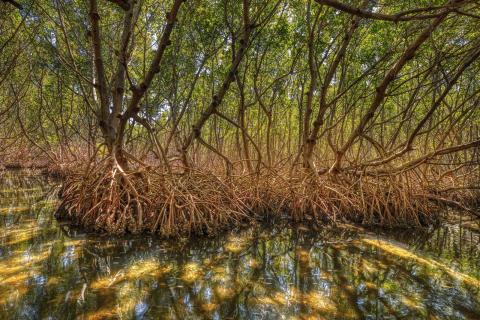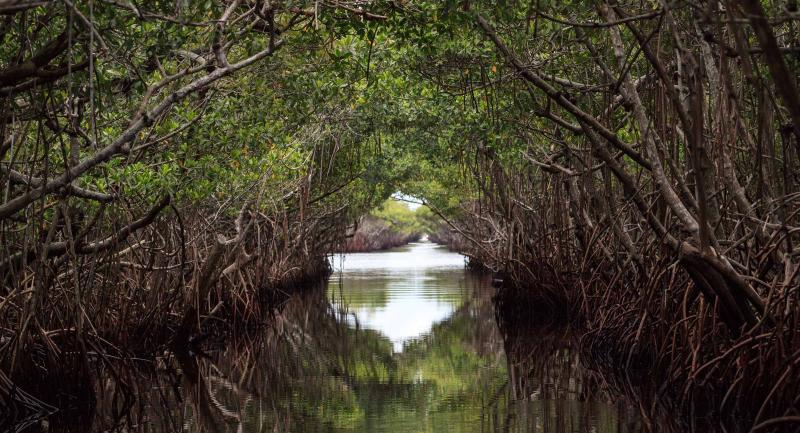Mangroves are crucial to the health of the Charlotte Harbor estuary.
They stabilize shorelines, prevent erosion during storms and provide perches for nesting seabirds. But their greatest contribution occurs when they shed their leaves, which sink and rot, supplying nutrients to a huge variety of microscopic creatures and forging links in a multitude of food chains. Falling at an average rate of 3.5 tons per acre, mangrove leaf litter sustains fungi, bacteria, protozoans, marine worms, copepods, amphipods, shrimp, crabs, mollusks, striped mullet and, ultimately, a sizeable portion of the local economy. At some point in its life cycle, every commercial fish or shellfish harvested in Charlotte Harbor depends on the mangroves in some way.

In southern Florida, there are three mangrove species. Red mangroves, Rhizophora mangle, are typically found growing at, or a little above, mean sea level. They have long “prop roots” that arch into the sea. Black mangroves, Avicennia germinans, colonize the upper reaches of the intertidal zone. White mangroves, Laguncularia racemosa, favor slightly higher ground, thriving in soil that’s seldom flooded, except during the highest tides and storm surges.
Mangroves are facultative halophytes, which means they can grow in either fresh or salt water. Their seedlings, called “propagules,” germinate while still on the tree. The propagules of black and white mangroves are small and short-lived, but those of the red mangrove are up to a foot in length. Like little green torpedoes, they drop into the sea, drifting for thousands of miles and remaining viable for up to a year. Eventually one end turns brown and becomes waterlogged, causing the propagule to float vertically. If it comes to rest on a tropical mudflat, the oscillations of the waves will embed the tip in the sediment and the seedling will grow.

